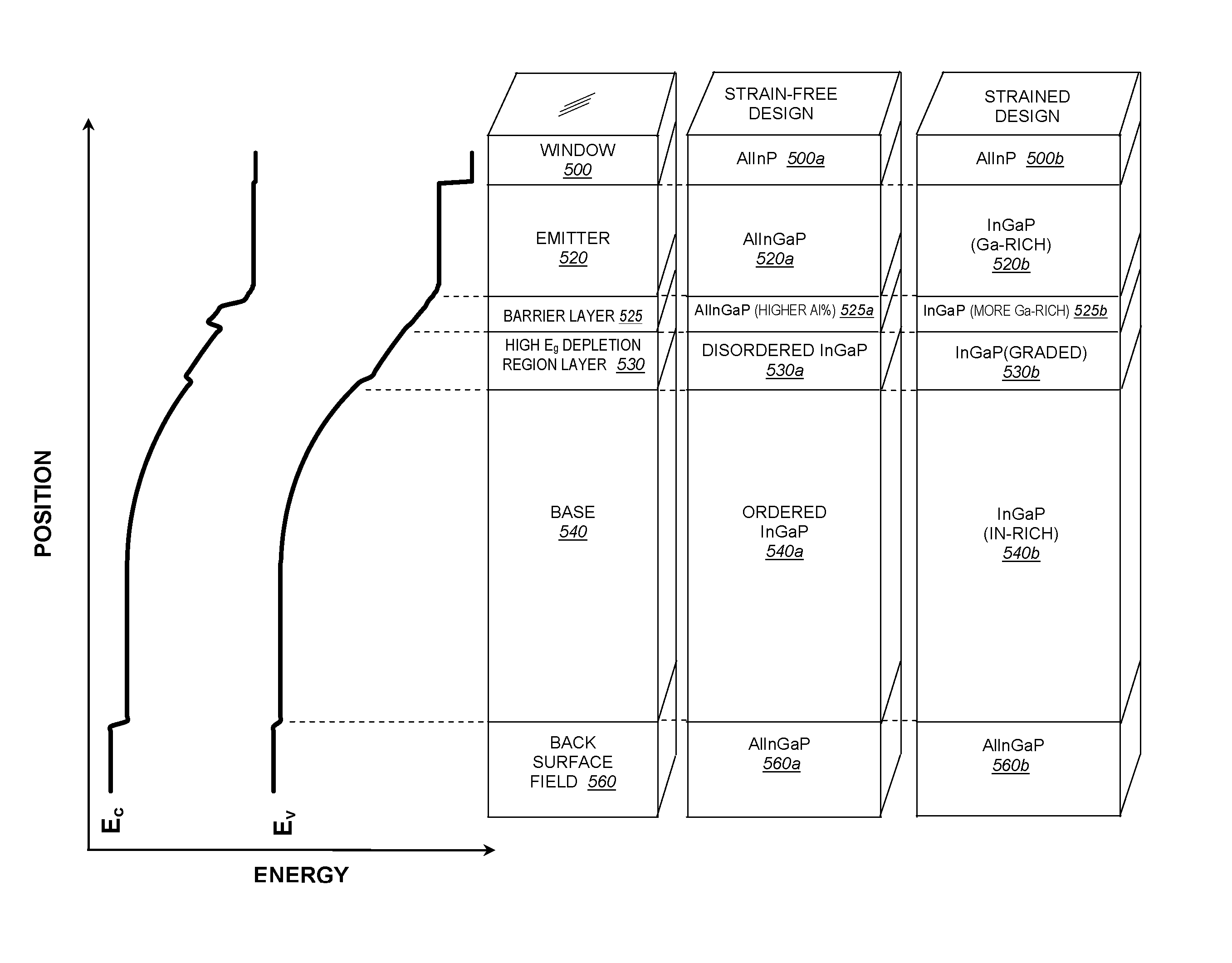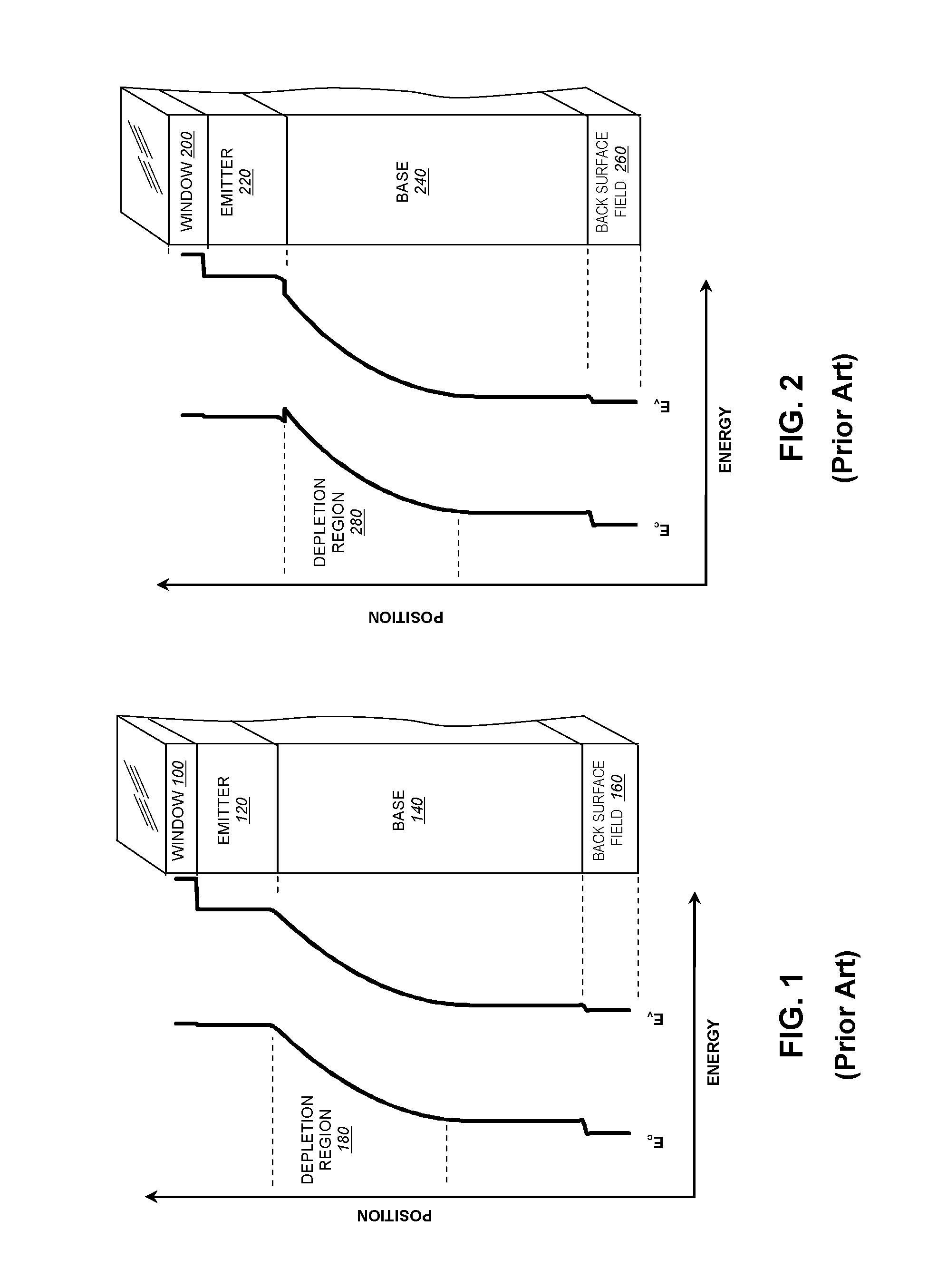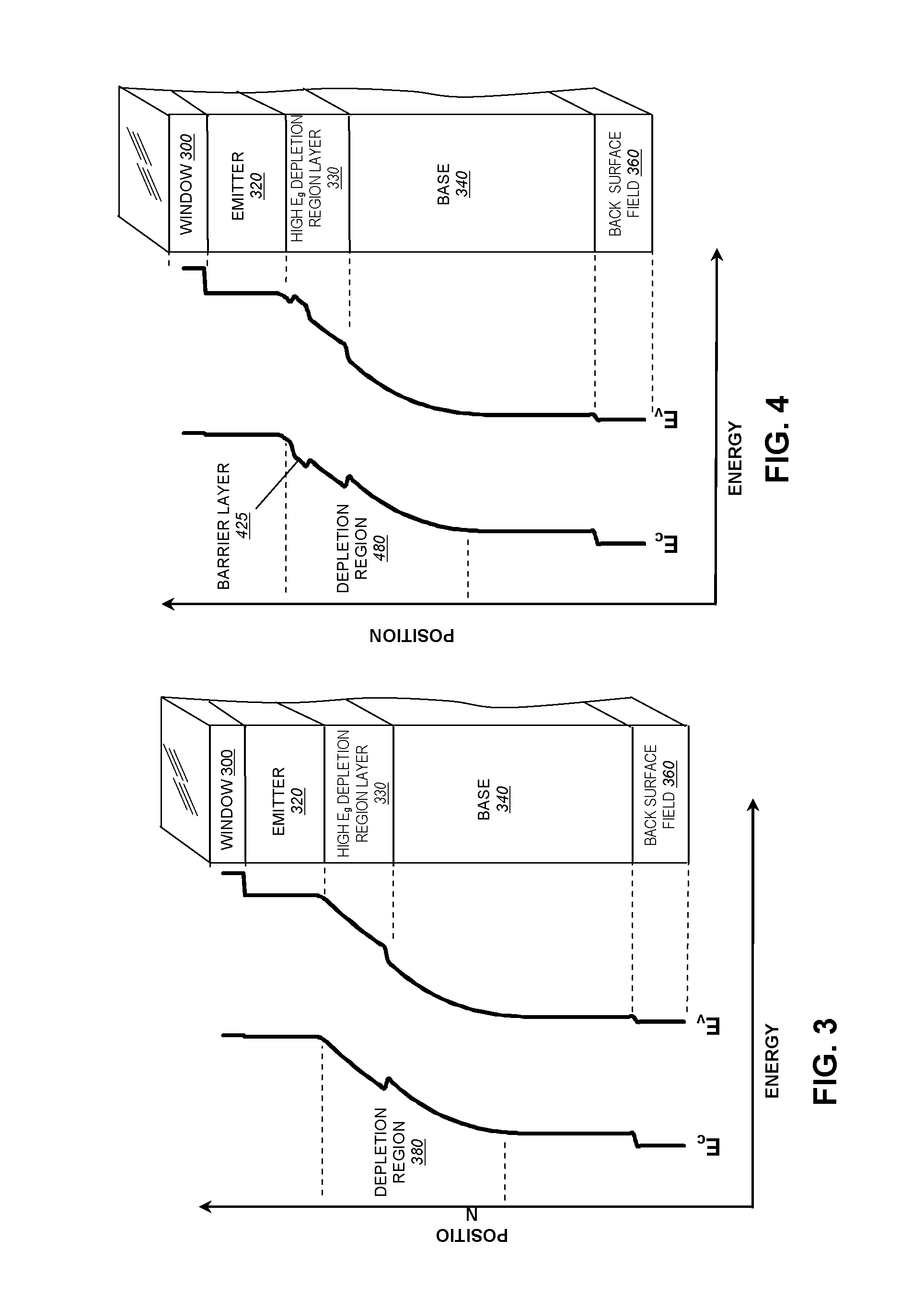Multijunction solar cell employing extended heterojunction and step graded antireflection structures and methods for constructing the same
a solar cell and heterojunction technology, applied in the field of semiconductor-based photovoltaic energy converters, can solve the problems of limiting the current generation capability of single junction devices, and the performance level of practical single junction solar cells has yet to be predicted by detailed balance calculations, so as to enhance the voltage and current generation capability and increase the power output of semiconductor solar cells
- Summary
- Abstract
- Description
- Claims
- Application Information
AI Technical Summary
Benefits of technology
Problems solved by technology
Method used
Image
Examples
Embodiment Construction
[0027]FIG. 1 details a conventional arrangement for an epitaxial subcell in a typical III-V multijunction solar cell consisting of a top window 100, an emitter 120, base 140, and back surface field layer 160. As in any PN or PIN semiconductor junction, a depletion region 180 of high electric field forms between the emitter and base layers. The window 100 and back surface field 160 layers are designed to both confine photogenerated carriers and maximize optical transmission into underlying layers. In a conventional homojunction subcell, the energy gap of emitter 120 and base 140 materials is identical, and thus the depletion region consists of a single type of semiconductor material. The depicted layers in this structure, and other layered structures depicted herein, are aligned with associated graphs of energy versus position (depth) so as to provide further understanding of the performance of the structure.
[0028]Replacing the emitter layer with a higher energy gap material and thus...
PUM
 Login to View More
Login to View More Abstract
Description
Claims
Application Information
 Login to View More
Login to View More - R&D
- Intellectual Property
- Life Sciences
- Materials
- Tech Scout
- Unparalleled Data Quality
- Higher Quality Content
- 60% Fewer Hallucinations
Browse by: Latest US Patents, China's latest patents, Technical Efficacy Thesaurus, Application Domain, Technology Topic, Popular Technical Reports.
© 2025 PatSnap. All rights reserved.Legal|Privacy policy|Modern Slavery Act Transparency Statement|Sitemap|About US| Contact US: help@patsnap.com



